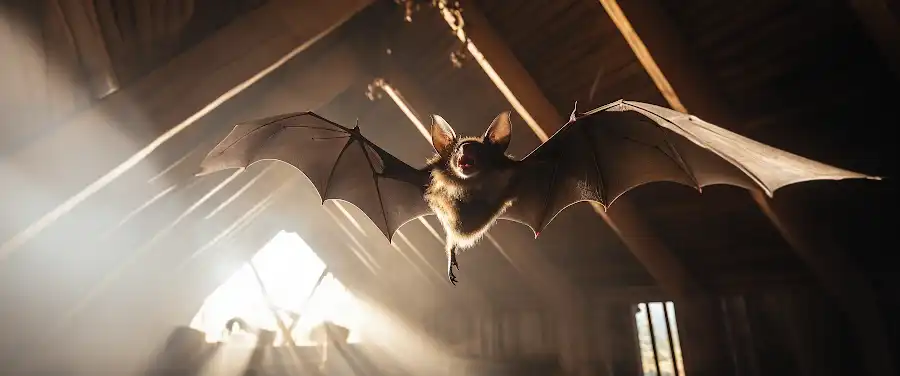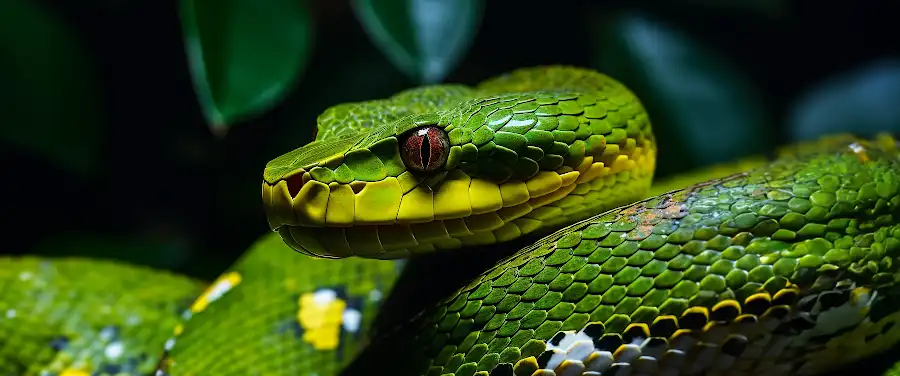
Ever wondered how much there is to learn about snakes; those often misunderstood yet captivating creatures? Well, the journey we’re about to embark upon will enthrall you as we unravel the intriguing world of these slithering beings. Beyond the shivers they may send down your spine, there’s a part they play in the circle of life that is truly fascinating, reaffirming the value in understanding these eclectic vertebrates. Their secretive nature and the unease they evoke has overshadowed the role they play in maintaining balance in various ecosystems, particularly the biodiverse habitats in central Florida. And we’re not just talking about any random snake behaviors – we’re delving deep into bioacoustics, a field that opens up a new dimension of how we perceive these fascinating reptiles.
Bioacoustics, if you’re wondering, dabbles in the relationship between animal sounds and their respective behaviors. Knowledge of Bioacoustics allows us to gain a profound understanding of how animals like snakes communicate, sense danger, hunt, and mate. Imagine scoring a front row seat to snake evolution and being privy to the diverse ways these creatures assert their roles in nature. As we examine snakes through the lens of bioacoustics, we peel back layers that reveal the seamless adaption of snakes to their habitats over time. I guarantee this enlightening play of signals and patterns will keep you on the edge of your seat.
Snakes have since time immemorial been part of the web of life, shaping and being shaped by the world they inhabit. Becoming privy to how they move, react, and live in central Florida’s diverse habitats through the combined analysis of their visual and acoustic behavior is an experience not to be missed. Groundbreaking bioacoustics research suggests that there is more to these scaly vertebrates than meets the eye. So, gear up, and get ready to journey into the fascinating bioacoustics of snakes, unraveling the secrets they carry within their hisses, and their silent, eloquent language. And for those still questioning “What exactly are snakes?”, stay hooked as we transition into that very question in the next segment!
Unearthing the World of Bioacoustics: Simplified Explanation and Importance of Bioacoustics
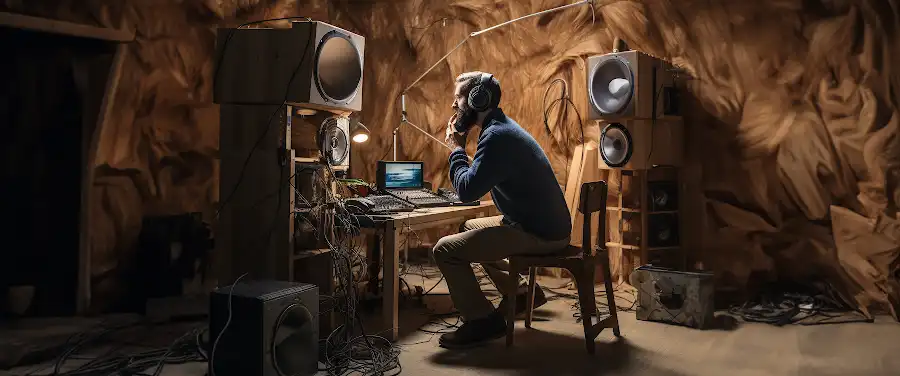
Bioacoustics, in its simplicity, is the study of sound produced by or affecting animals. This intricate branch of zoology has played a substantial role in gaining a broader understanding of various animals, their behaviors, communication strategies, and survival mechanisms. The power of bioacoustics is immense, extending its utility to varied spheres ranging from discovering new species to tracking animal populations and even uncovering evidence of climate change impacts. When we consider reptiles, specifically snakes, bioacoustics offers a fascinating aspect of discovery. We may not traditionally associate sound and snakes, but that is where the magic of bioacoustics resides.
Snakes, common in central Florida, have unique ways of perceiving their environment, communicating, and reacting to perceived threats, aspects that bioacoustics help unravel. The use of auditory signals by snakes may not be as glaringly evident as in birds or mammals, but they represent an intriguing part of the serpentine world. This fascinating field not only enlightens us about their auditory abilities but also their unique communication methods.
How does Bioacoustics apply to Snakes?
Isn’t it often wondered whether or how snakes hear considering they lack visible ears? Well, snakes possess an exceptional hearing mechanism, thanks to bioacoustics, and we can now distinguish how snakes pick up sounds as vibrations via their jawbone and send these signals to their brain. Understanding snake hearing through bioacoustic studies has bolstered our grasp about how these reptiles function at different sound frequencies.
Snakes respond differently to varying frequencies, and studying these patterns has provided insights into snake behaviors and their intricate communication. An interesting study by the University of Alberta found that rattlesnakes are more responsive to airborne sounds than expected, indicating snakes have more advanced auditory abilities than what was initially thought.
Beyond the physical, bioacoustics can unravel aspects about the snakes’ social behavior, hunting habits, and mating rituals. For example, male adders, a kind of snake, are known to use vibration ‘songs,’ to attract females and these ditties also serve as warnings to rivals, all studied through the lens of bioacoustics.
When it comes to communication, snakes primarily depend on chemical and visual signals. Yet, acoustic signals also play a role, particularly in certain situations like attracting mates or alerting other snakes. Borrowing from bioacoustic communication, we understand that different species of snakes produce various sounds, from hissing to rattling, each of them playing a distinct role in their survival and lifestyle.
The fascinating world of bioacoustics teaches us that the perception of snakes as silent, mysterious creatures is far from the truth. They are communicative, more perceptive to sounds, and crucially, they bear an unseen auditory realm that we continue to explore.
In our quest to understand these mysteriously captivating creatures, the relevance of science, particularly bioacoustics, remains immense. It’s not just about perceiving these creatures from a fear-filled distance, but about genuinely understanding them – their behavior, their capabilities, their existence. Let’s delve deeper as we study if snakes really do possess the power of hearing, in the next section.
Do snakes possess the power of hearing?- A thorough look into the auditory system of snakes
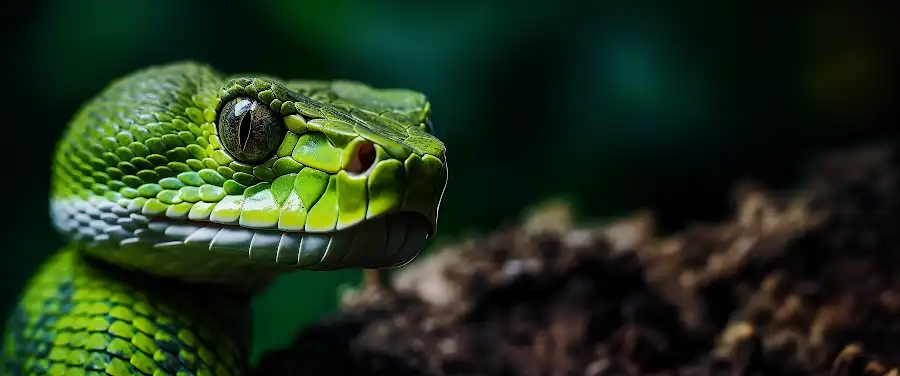
Ever wondered how a snake without noticeable ears could possibly hear? It’s not uncommon for people to think snakes are deaf, but this couldn’t be farther from the truth. They boast a unique way of receiving and decoding sound vibration. Fear not! We’re about to unravel the fascinating world of the snake auditory system and help you understand snakes in a whole new light.
Snakes feature a rather unconventional method of hearing, the essence of which lies in their sensitivity to vibrations. In a startling 2012 study by the University of Munich, it was discovered that snakes predominantly ‘hear’ through vibrations transmitted from the ground to their jawbone, confirming the theory that they use a kind of bone conduction.
The Distinction in Hearing of Different Snake Species
All that being said, not all snakes are created equal — at least not when it comes to their auditory capabilities. Species such as the Eastern Diamondback Rattlesnake and Cottonmouth Water Moccasin, common in central Florida, demonstrate varying degrees of sensitivity to vibration. Some are naturally glued to the ground, relying heavily on terrestrial vibrations, while others who spend more time in trees exhibit higher sensitivity to airborne sounds.
Remarkably, these auditory distinctions have also shaped their hunting practices. After all, it’s quite practical to hunt using your strongest senses, right?
Understanding How Snakes Perceive Sound and Vibration
The epic journey of sound vibrations in snakes is a whole new venture in the realm of bioacoustics facts. Sound vibrations from the environment travel through the ground or the air, getting picked up by a snake. Here’s where the magic happens; the snake’s lower jawbone catches these vibrations, transmitting them through the quadrate bone to the inner ear.
Sound waves oscillate the snake’s inner ear fluid, which in turn triggers the sensory cells responsible for sending signals to the snake’s brain. Although it’s different from the way our eardrum and cochlea work, snakes are tuned in to their environment just as effectively, if not more so.
So next time you find yourself in the presence of a snake, remember this: they can ‘hear’ you, in their own unique way, even though it involves more feeling than actual hearing.
Here’s a list of some key takeaways about snakes and their bizarre hearing process:
- Snakes primarily ‘hear’ through vibrations sensed by their lower jawbone.
- Different species have different sensitivities to terrestrial or airborne vibrations based on their lifestyle.
- Snakes utilize a type of bone conduction for sound perception.
- The sound vibration process differs greatly in snakes from that in humans, showcasing nature’s adaptability.
Fascinating, isn’t it, how nature has equipped every kind of creature with ingenious adaptations to survive and thrive in their habitats? Well, hold on to that thought of awe as we slither into the next intriguing topic: ” Diving into the fascinating world of snake communication“. Prepare to be mind-blown by the complex communication strategies of these other-worldly creatures.
Diving into the Fascinating World of Snake Communication
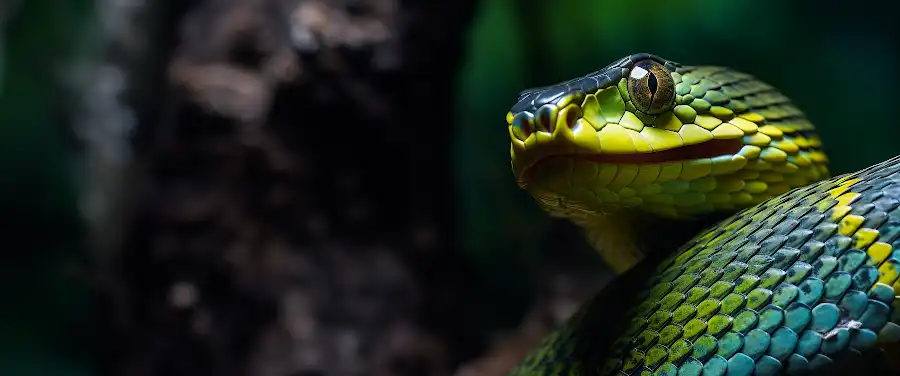
Let’s begin this journey of understanding snakes by delving into the beautiful and complex world of snake communication. Communication in snakes might seem like a mysterious concept, but it’s a fundamental part of their life. They communicate in myriad ways, using sound and vibrations, visual cues, and chemical signaling.
Sound and Vibrations
Snakes might seem eerily silent creatures, but they rely heavily on sound and vibrations to perceive the world around them. While they lack ears, snakes are exquisitely in tune with seismic vibrations around them. Their jaws essentially function as an ear, picking up vibrations from the ground. These vibrational signals give them key information about their environment, helping them locate prey, avoid threats, and even find potential mates.
Visual Cues and Chemical Signals
In addition to sound, snakes also use visual cues for communication, particularly during breeding season. Males perform an elaborate dance-like “combat dance” to compete for females, a fascinating expression of snake body language. Snake communication also extends into the realm of scents. Snakes, with the help of the vomeronasal organ, detect chemical cues or pheromones, guiding their behavior in hunting or mating.
The Crucial Role of Bioacoustics in Snake Communication
Amazingly, snakes use bioacoustics, the study of sound production and perception in animals, to communicate. The science of bioacoustics and mating as well as territory confrontation in snakes revolves around understanding how snakes manage to perceive sound waves and vibrations.
Sound Generation and Vibrational Sensitivity
Snakes generate sounds through the process of stridulation, which involves rubbing together certain body parts, creating a sort of “hissing” or “buzzing” sound. This might seem like a mere curiosity, but in the realm of snake life, it’s a potent form of communication, particularly significant in territory confrontation. This information is perceived by their jaw bone, which serves as a highly sensitive, seismic detector.
Significance of Bioacoustics in Snake Conservation
One exciting aspect in snake conservation is the potential for bioacoustics to aid in their preservation. By understanding the acoustic ecology of snakes, scientists could track and monitor snake populations, aiding in conservation decisions.
For example, researchers from the University of Central Florida employed bioacoustics to track and study the Eastern Indigo snake, uncovering fascinating insights about this threatened species. By understanding the unique acoustic footprint of each snake species, we can effectively ensure their survival in their natural habitats.
| Type of Communication | Explanation | Examples |
|---|---|---|
| Sound and Vibrations | Perceive seismic vibrations | Locate prey, find mates |
| Visual Cues | Physical displays | Combat dance in males |
| Chemical Signals | Detect pheromones | Hunting, mating |
| Bioacoustics | Sound generation and perception | Territory confrontation, mating |
As we further appeciate the complexities in understanding snakes, we now transition to another exciting question: How do snakes hunt to survive? It’s intriguing how these legless reptiles make efficient and cunning predators in the animal kingdom. Let’s explore that further!
Conclusion
As we conclude, it’s important to reiterate the sheer richness and importance of understanding snakes and their unique Bioacoustics. Snakes, especially those in central Florida, speak a fascinating language all their own, and our continued exploration of their bioacoustics deepens our overall understanding of these amazing creatures.
In the face of widespread fear and misunderstanding, educating ourselves about their behavior, characteristics, and roles in the ecosystem gives us a better insight into why snakes matter. They are an essential part of the balance in nature, helping control pest populations and serving as an important prey for other wildlife. Appreciation of snakes begins with understanding, and understanding calls for active research and discovery.
Enhanced knowledge about the lives and behaviors of snakes can also translate into more impactful conservation efforts. Snakes, like any other wildlife, deserve protection and advocacy. The balance of our global ecosystems hinges greatly on how we treat every single species, snakes included.
Coming out of this discussion, let’s keep an open mind about snakes. They are more than just slithering creatures. Their bioacoustics, behaviors, and roles within the ecosystem speak volumes about the complexity and wonder of our natural world. By appreciating and respecting snake wildlife in their natural habitat, we not only enrich our understanding, but we also add a layer of depth to our respect for nature.
Our takeaway? Snakes are essential – they are an integral part of our earth’s rich tapestry. Let’s do our part in understanding, preserving, and respecting these fascinating creatures for the betterment of our planet and its future.
Frequently Asked Questions about Understanding Snakes
Table of Contents
- Unearthing the World of Bioacoustics: Simplified Explanation and Importance of Bioacoustics
- Do snakes possess the power of hearing?- A thorough look into the auditory system of snakes
- Diving into the Fascinating World of Snake Communication
- The Crucial Role of Bioacoustics in Snake Communication
- Conclusion
- Frequently Asked Questions about Understanding Snakes


